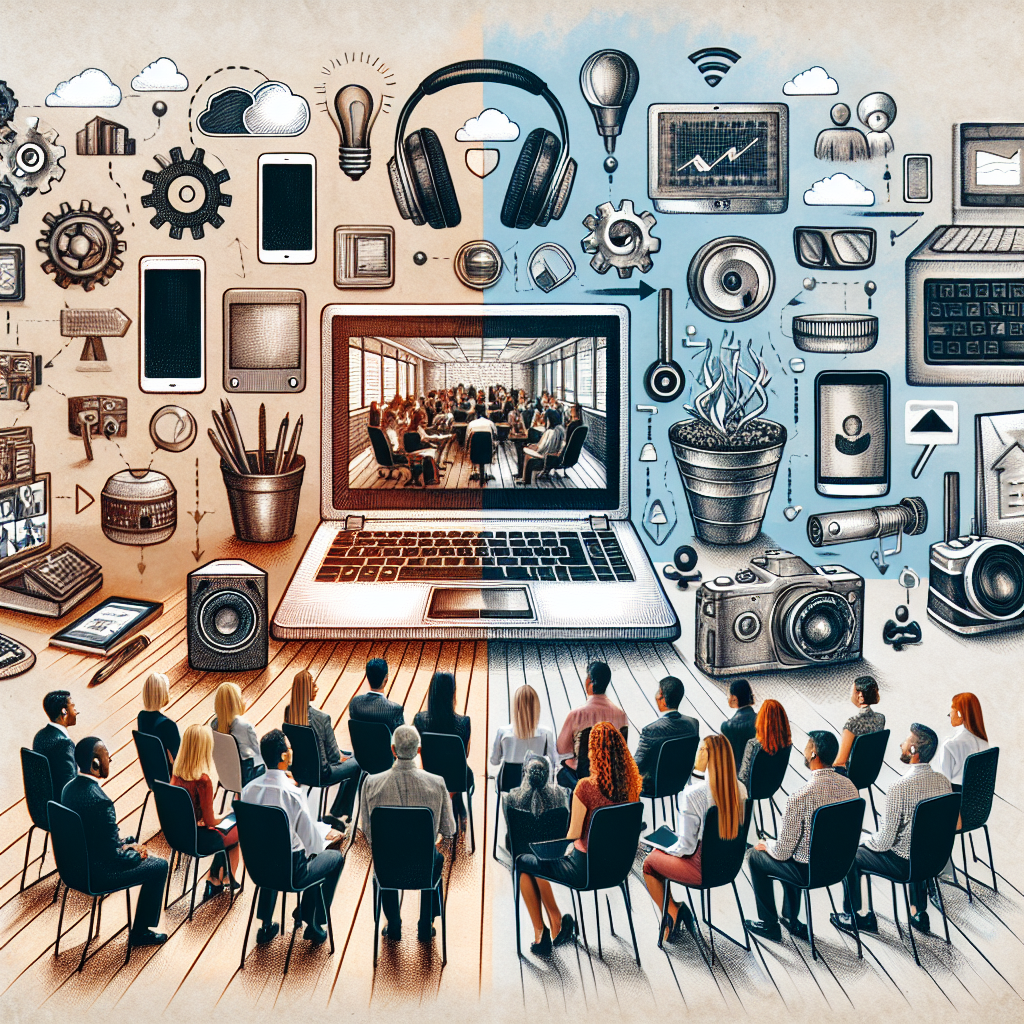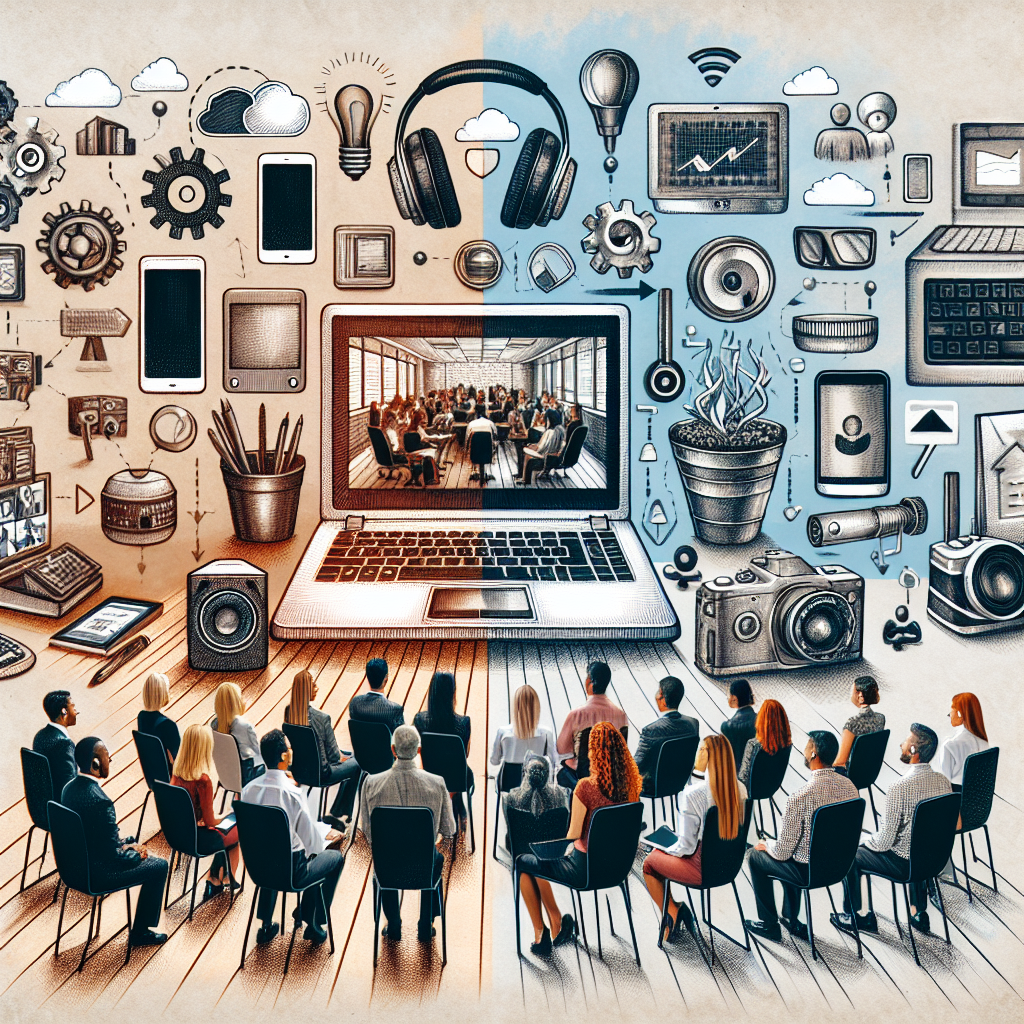Imagine a world where you can work from the comfort of your own home, free from the confines of a traditional office space. With the rapid advancements in technology, this dream has become a reality for many individuals across the globe. In this article, we will explore the crucial role that technology plays in supporting remote work and how it has revolutionized the way we approach our professional lives. From seamless communication to increased productivity, technology has undeniably transformed the way we work, ensuring that distance is no longer a barrier to success. So, grab a cup of coffee, sit back, and let’s explore how technology has paved the way for the rise of remote work.
The Role of Technology in Supporting Remote Work
In recent years, the concept of remote work has gained immense popularity, with more and more individuals and organizations opting for flexible work arrangements. Whether you are a freelancer, a remote employee, or a business owner who manages a distributed team, technology plays a crucial role in supporting and enabling remote work. From collaboration and communication tools to cybersecurity solutions and employee monitoring software, there is a wide range of technologies available to help streamline remote work and maximize productivity. In this comprehensive article, we will explore the various ways in which technology supports remote work and dive into the specific tools and solutions that can enhance your remote work experience.
1. Collaboration and Communication Tools
Collaboration and effective communication are the cornerstone of successful remote work. Thankfully, there are a plethora of tools available to facilitate seamless collaboration and communication among remote teams.
1.1 Video Conferencing Tools
Video conferencing tools have become a primary means of communication for remote teams. These tools allow team members to have face-to-face conversations, conduct virtual meetings, and collaborate in real-time, regardless of their physical locations. Popular video conferencing tools such as Zoom, Microsoft Teams, and Google Meet offer features like screen sharing, file sharing, and recording capabilities, which enhance collaboration and foster a sense of connection among remote team members.
1.2 Instant Messaging and Chat Tools
Instant messaging and chat tools are essential for quick and efficient communication in remote work settings. These tools enable team members to have real-time conversations, share information, and address queries promptly. Platforms like Slack, Microsoft Teams, and Discord offer not only text-based communication but also features like file sharing, channel organization, and integration with other productivity tools, making collaboration a breeze even when working remotely.
1.3 Project Management Platforms
Project management platforms are invaluable for remote teams, as they provide a centralized space for organizing and tracking tasks, assigning responsibilities, and monitoring project progress. Tools like Trello, Asana, and Monday.com allow teams to create and manage tasks, set deadlines, and visualize project workflows, enabling efficient project management and collaboration in a remote work environment.
1.4 Cloud-based Document Collaboration Tools
Document collaboration tools enable simultaneous editing and sharing of documents among team members, eliminating the need for back-and-forth email exchanges and ensuring everyone is working on the latest version of a document. Google Workspace (formerly G Suite), Microsoft Office 365, and Dropbox Paper are popular cloud-based document collaboration tools that enable real-time collaboration, version control, and easy access to documents from any location, making remote document collaboration seamless and efficient.
2. Virtual Private Networks (VPNs) and Remote Desktop Applications
Security and seamless access to resources are paramount when working remotely. Virtual Private Networks (VPNs) and remote desktop applications provide the necessary tools to ensure secure remote access and facilitate remote desktop connections.
2.1 Ensuring Secure Remote Access
VPNs encrypt internet connections, providing a secure tunnel for remote workers to access their organization’s network and resources. By connecting to a VPN, remote workers can securely access company servers, databases, and other resources as if they were physically present in the office. VPN services like NordVPN, ExpressVPN, and CyberGhost offer robust encryption protocols, ensuring the confidentiality and integrity of remote work communications.
2.2 Facilitating Remote Desktop Connections
Remote desktop applications, such as TeamViewer, AnyDesk, and Remote Desktop Protocol (RDP), allow remote workers to connect to their office computers or servers from their home devices. These applications provide remote access and control, enabling remote workers to access files, applications, and desktop environments just as if they were sitting in front of their office computer. Remote desktop connections ensure seamless access to work resources, enabling remote workers to be productive and efficient in their day-to-day tasks.

3. Remote Access Software and Mobile Apps
In addition to VPNs and remote desktop applications, there is a wide range of remote access software and mobile apps available to support remote work.
3.1 Accessing Applications and Files Remotely
Remote access software, such as Citrix Workspace, VMware Horizon, and Microsoft Remote Desktop, allows remote workers to access their work applications and files securely from any device with an internet connection. These software solutions create a virtual environment that replicates the office workspace, enabling remote workers to have a seamless and consistent computing experience regardless of their physical location.
3.2 Managing and Controlling Remote Devices
Mobile apps like Microsoft Intune, VMware Workspace ONE, and Jamf Pro offer remote device management capabilities, allowing IT teams to manage and control remote workers’ devices. With these apps, IT administrators can remotely install software updates, enforce security policies, and troubleshoot device issues, ensuring that remote devices are secure and up to date.
4. Productivity and Time Management Tools
Maintaining productivity and managing time effectively are crucial aspects of remote work. Thankfully, there are numerous productivity and time management tools available to help remote workers stay organized and focused.
4.1 Task Management and To-Do Lists
Task management tools like Todoist, Wunderlist (now Microsoft To Do), and Asana help remote workers organize and prioritize tasks, set deadlines, and track progress. These tools enable individuals and teams to stay on top of their workload, manage projects efficiently, and ensure timely completion of tasks.
4.2 Time Tracking and Timesheet Tools
Time tracking and timesheet tools, such as Toggl, Harvest, and Clockify, assist remote workers in accurately recording and monitoring their working hours. These tools allow individuals and organizations to track billable hours, analyze time spent on different tasks or projects, and generate comprehensive timesheets for reporting and invoicing purposes.
4.3 Remote Monitoring and Employee Surveillance Software
Remote monitoring and employee surveillance software, such as Teramind, Time Doctor, and ActivTrak, enable employers to monitor remote workers’ activities, track their productivity, and ensure compliance with company policies. While these tools can be controversial due to privacy concerns, some organizations find them beneficial for maintaining transparency and productivity in remote work settings.

5. Cybersecurity and Data Protection Solutions
With the increasing dependence on technology in remote work, cybersecurity and data protection become critical considerations. Various solutions are available to safeguard remote work environments and protect sensitive data.
5.1 Endpoint Security Solutions
Endpoint security solutions, such as antivirus software, firewalls, and endpoint detection and response (EDR) tools, protect remote devices from malware, viruses, and other cyber threats. Well-known endpoint security solutions include Norton, McAfee, and Malwarebytes, offering comprehensive protection and real-time threat detection for remote work devices.
5.2 Data Loss Prevention and Backup Solutions
Data loss prevention (DLP) and backup solutions ensure that critical data is protected and recoverable in the event of accidental deletion, hardware failure, or security breaches. Tools like Druva inSync, Carbonite, and Veeam Backup & Replication provide automated backups, secure storage, and recovery options to safeguard remote work data.
5.3 Two-Factor Authentication (2FA) and Password Managers
Implementing two-factor authentication (2FA) adds an extra layer of security to remote work accounts and systems by requiring users to provide another method of verification in addition to their password. Password managers like LastPass, Dashlane, and 1Password help remote workers create and store complex passwords securely, reducing the risk of password-related security breaches.
6. Remote Technical Support and IT Helpdesk
In a remote work environment, the availability of remote technical support and an efficient IT helpdesk is essential for addressing technical issues and ensuring smooth operations.
6.1 Remote Desktop Support Tools
Remote desktop support tools like TeamViewer, LogMeIn Rescue, and Chrome Remote Desktop enable IT support teams to remotely access and troubleshoot remote workers’ devices. These tools facilitate quick problem resolution, minimizing downtime and ensuring remote workers can continue their work uninterrupted.
6.2 IT Ticketing and Helpdesk Software
IT ticketing and helpdesk software, such as ServiceNow, Zendesk, and Freshdesk, provide a centralized platform for remote workers to report technical issues and request support. These tools streamline the IT support process by automating ticket management, prioritizing and assigning tickets, and tracking issue resolution, enhancing the efficiency of IT support in a remote work environment.
7. Training and Onboarding Tools
Training and onboarding remote employees can be challenging, but technology offers a range of solutions to simplify the process and ensure a smooth transition.
7.1 Virtual Learning Management Systems (LMS)
Virtual learning management systems, like Moodle, Adobe Captivate Prime, and TalentLMS, facilitate remote training and onboarding by providing a platform for creating, delivering, and tracking online courses. These systems offer features such as multimedia content delivery, assessments, and progress tracking, allowing organizations to train and onboard remote employees effectively.
7.2 Webinar and Video Training Platforms
Webinar and video training platforms, such as GoToWebinar, Zoom Webinar, and Microsoft Teams, enable organizations to conduct virtual training sessions, workshops, and presentations for remote employees. These platforms offer interactive features like screen sharing, chat, and Q&A sessions, fostering engagement and collaboration in remote training environments.
8. Virtual Private Cloud (VPC) and Infrastructure as a Service (IaaS)
Virtual private cloud (VPC) and infrastructure as a service (IaaS) providers offer scalable computing resources, data storage, and networking capabilities, empowering organizations to host and manage business applications and data in a remote work environment.
8.1 Hosting Scalable Business Applications
VPC and IaaS providers like Amazon Web Services (AWS), Google Cloud Platform (GCP), and Microsoft Azure enable organizations to scale their business applications and infrastructure as per their growing needs. These platforms offer flexible computing resources, automated scaling options, and robust security features, ensuring reliable performance and availability of remote business applications.
8.2 Data Storage and Backup Solutions
VPC and IaaS providers also offer secure and scalable data storage and backup solutions. Organizations can store and back up their critical data in the cloud using services like Amazon S3, Google Cloud Storage, and Microsoft Azure Blob Storage, eliminating the need for on-premises infrastructure. Cloud storage solutions provide high durability, redundancy, and easy accessibility, ensuring data integrity and availability in remote work scenarios.
9. Remote Work Analytics and Employee Monitoring
For organizations that want to gain insights into their remote work operations and monitor employee productivity, remote work analytics and employee monitoring tools offer valuable data and visibility.
9.1 Remote Work Analytics Tools
Remote work analytics tools, such as Time Doctor, Hubstaff, and Workpuls, collect and analyze data on remote workers’ activities, providing insights into areas like time spent on tasks, application usage, and overall productivity. These tools enable organizations to optimize workflows, identify bottlenecks, and make data-driven decisions to enhance remote work efficiency.
9.2 Employee Monitoring Software
Employee monitoring software allows organizations to monitor and track remote workers’ activities, screen time, and online behavior. While controversial due to privacy concerns, tools like Teramind, ActivTrak, and Veriato provide detailed reports and alerts regarding employee behavior, enabling organizations to ensure compliance, prevent data breaches, and maintain productivity standards.
10. Wellness and Mental Health Support Apps
Taking care of remote workers’ wellness and mental health is crucial for their overall well-being and productivity. Various apps and platforms offer virtual therapy, counseling, and mindfulness resources to support remote workers in maintaining a healthy work-life balance.
10.1 Virtual Therapy and Counseling Platforms
Virtual therapy and counseling platforms like Talkspace, BetterHelp, and Ginger offer remote workers access to licensed therapists, counselors, and mental health professionals through secure video sessions or text-based messaging. These platforms provide a confidential and convenient way for remote workers to seek professional support and guidance for various mental health concerns.
10.2 Meditation and Mindfulness Apps
Meditation and mindfulness apps, like Headspace, Calm, and Insight Timer, offer guided meditation sessions, mindfulness exercises, and stress-management techniques to help remote workers relax, improve focus, and reduce anxiety. These apps provide a range of mindfulness resources that can be accessed anytime, anywhere, contributing to the well-being and mental health of remote workers.
In conclusion, technology plays a crucial and indispensable role in supporting remote work. From collaboration and communication tools to cybersecurity solutions and employee monitoring software, the wide array of available technologies offers remote workers and organizations the means to work efficiently, securely, and productively in a remote work environment. By leveraging the technological advancements in these various areas, remote workers can stay connected, collaborate seamlessly, and maintain optimal levels of productivity, while organizations can ensure secure access to resources, protect sensitive data, and monitor and support their remote workforce effectively.
